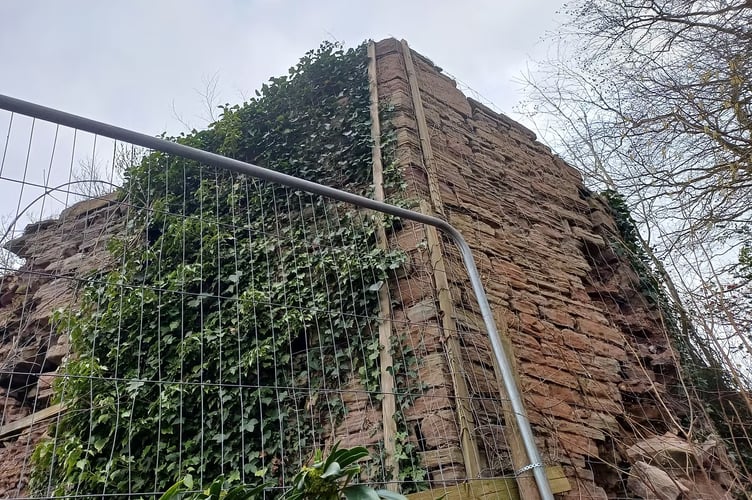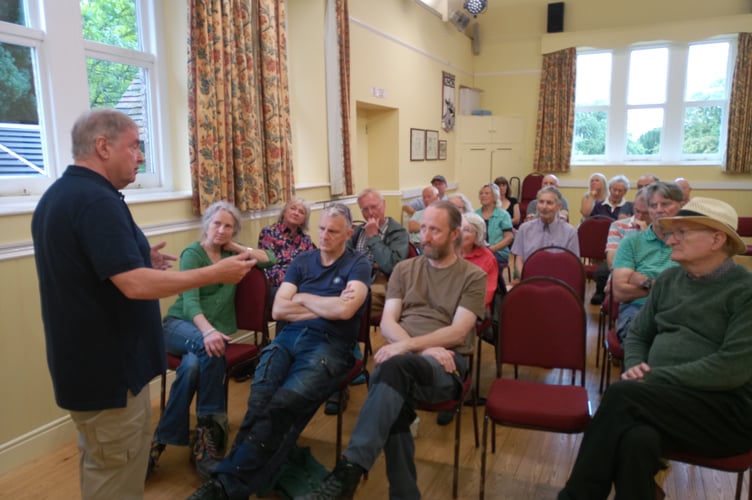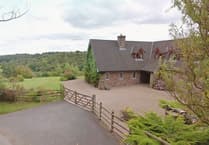A VILLAGE community have lost their bid to save an historic monument as Herefordshire Council have deemed that the structure is unsafe and that it has to be demolished.
It is believed that the Linton Pound dates back to mediaeval times and was originally built as a lookout tower. The structure became the pound around 160 years ago when it was given a new life as a place to house stray animals.
But over the decades the building has fallen into disrepair and despite a recently launched campaign to save the pound, the local authority, despite it being listed on its website as an historic ancient monument, has decided that its condition is too far gone.

A Herefordshire Council spokesperson said: “The building in question is not listed nor on Historic England’s Register, and there is no identified owner.
“The structure has been identified as dangerous and following conservation, archaeological and legal advice, works to remove the structure have started in order to eliminate the serious health and safety risk.
However, the council have reached agreement with the stakeholders involved, in that the stone will be salvaged and the parish council will retain this for a project at a future date, which will celebrate and remember the pound.”
Linton resident John Lancaster said: “We knew what we needed to do to save the Pound, but we also knew this would take time. Unfortunately, Herefordshire Council considered that in view of the fragility of the external stonework, which presented what it considered to be unacceptable risks to the public, they were unable to give us the time we needed.
“We are now exploring the idea of building a new stone structure based on the idea of a sheep fold, using the original stone, keeping the same location with the same views - as a public amenity for the village, at the same time celebrating its history.”
A structural engineer appointed by Herefordshire Council, recently examined the Linton Pound to report on its condition. The engineer concluded that whilst the external stonework is very fragile in several places, the inner core of the structure is stable and has not been affected by the works taking place on the adjacent plot.
The engineer observed that although the owners of the neighbouring land have introduced safety fencing and stock wiring for the purpose of protecting passers-by, there remain significant safety issues.
The engineer acknowledge that parts of that external structure are unstable and present a danger to people using the footpath that runs adjacent to the Pound.

And as the land is not owned by anyone, the villagers’ felt they would need to follow a legal route to obtain permission to work on the structure.
Mr Lancaster said that this is a protracted process and would create unavoidable delays and this means that the health and safety requirements of Herefordshire Council could not be met.
“Regrettably this means Herefordshire Council has made the decision to proceed to demolition.
“Nevertheless, all is not lost. It is our intention to explore the legal options available to us to enable work to be done on the site.
One possible vision is for a structure, inspired by the work of artists like Andy Goldsworthy, using the existing stone (which the local authority has stated we can retain) - with the objective of creating a small history garden.
“This would celebrate the Pound’s past, with seating and a history board, permitting visitors to enjoy the outstanding views over the surrounding district and the new tree planting and landscaping being developed below from a spot also enjoyed by our Anglo-Saxon ancestors.”
The Linton Pound would have been at least 20 feet high on two of its elevations. It is located on the intersection between an Anglo-Saxon route and an ancient road into Gloucestershire and would have had views towards the Malverns, the Cotswold hills and the Welsh mountains.
The campaign to save the Pound has been a huge community effort involving local Linton residents with a deep interest in the area’s local history.
The owners of the land adjacent to the Pound have enabled access to the lower parts of the structure and have been supportive of efforts to save it for the future.
Local MP, Jesse Norman, who supported the campaign, said: “Experience elsewhere has shown that it is often not until such monuments are threatened that we really discover more about their original purpose and function.”
Mr Lancaster concluded: “Our campaign has also involved Jesse Norman MP, our ward Councillor Harry Bramer, building professionals, council officers, parish councillors, and our local newspaper, the Ross Gazette.
“Once the issues and challenges have been identified, this could become a project worthy of local celebration.”





Comments
This article has no comments yet. Be the first to leave a comment.